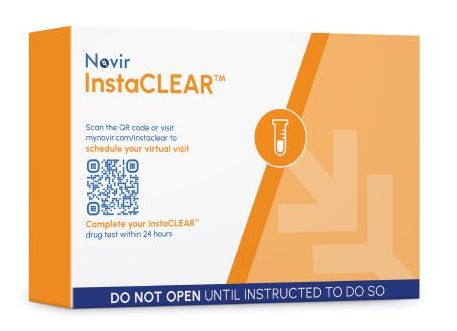For owner-operators, staying compliant with government regulations is crucial for your business. To help you manage the most common requirements, here’s an Owner Operator DOT Compliance Checklist.
1) Drug and Alcohol Testing
Owner-operators must actively participate in a Department of Transportation (DOT) Drug and Alcohol testing program. A consortium or third-party administrator handles the testing process, grouping drivers from multiple companies into a single random selection pool. When the consortium meets FMCSA random testing rates, every member automatically stays compliant. This system helps ensure fairness and consistency in testing across all participants.
Register with a DOT Consortium to stay compliant. Learn more about drug and alcohol testing via the DOT Employer Handbook.
InOut Labs Owner Operator Consortium
2) FMCSA Clearinghouse
Owner Operators are required to select a C/TPA in the Clearinghouse. Your annual consortium dues with InOut Lab include our Clearinghouse services for you. You still need to register and select InOut Labs as your C/TPA and purchase queries.
Like other employers, Owner Operators are required to query themselves annually, or have a C/TPA do it for you.
To register as an Owner Operator in our random testing consortium. Click here.
Note: For the purposes of the Clearinghouse, if the owner is also a driver, you are an Owner Operator. For the InOut Labs consortium, an Owner Operator is a one-employee company where the owner is the driver.
3) Written Substance Abuse Policy
The FMCSA does not exempt Owner Operators from having a written policy. However, if you join our program, we provide a simple, tailored template in case an auditor requests one. But if you decide to hire other drivers, the requirements change—you will need a formal written policy. When that happens, we offer an affordable option to keep you compliant.
4) Supervisor Training
Supervisor Reasonable Suspicion Training applies to all DOT employers—except Owner Operators. Fortunately, you don’t have to worry about this requirement. However, if you hire another driver, you must complete the training. See here for an affordable option.
5) Driver Qualification file (DQ File)
The FMCSA requires that trucking companies must keep a driver qualification file (www.inoutlabs.com/dqfiles) for every driver. If you’re an owner-operator, this means you. It has to be maintained for the past three years and has eight parts:
- Employee application must contain the mandatory information
- Motor Vehicle Record (MVR) for every state you held a commercial license or permit
- MVR for the previous three years
- Every year you must do an MVR review and note who did the review and the date. Also, identify any violations of FMCSA regulations.
- Record of violations is a list of any violations in the previous 12 months. You need this even if you don’t have any violations (parking tickets don’t have to be included)
- A copy of your commercial driver’s license (CDL)
- Medical Examiners Certificate (or copy), which is valid for up to 24 months
- A note verifying that the medical examiner was on the National Registry of Certified Medical Examiners List
InOut Labs offers a software tool that is Free for up to 5 drivers. Sign up here.
You will also need to understand Hours of Service rules, which dictate how many hours you can drive without taking a break. It’s not enough to follow the rules. You have to prove you’ve followed them. HOS compliance is also considered one of the biggest fleet manager responsibilities.
FMCSA- compliant Electronic logging devices (ELDs) can help you keep track of all this information. These devices automatically record all driving time and location information for you.
6) Complete a driver vehicle inspection report (DVIR) daily
A DVIR is a pre-trip inspection of items such as brakes, lights, and tires. It ensures a vehicle is fit for the road. Commercial drivers are required by federal law to complete a DVIR.
InOut Labs is here to help companies of all sizes, including Owner Operators, stay compliant with the tangled web of DOT regulations.


